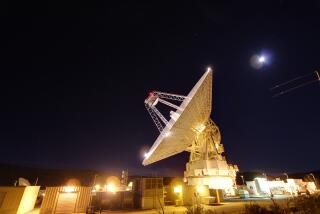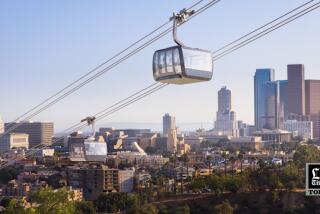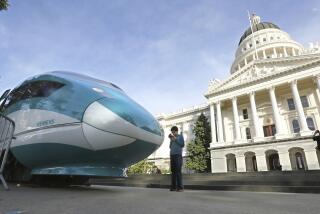Space Station Cost Estimate Rises--Now at $27.5 Billion
- Share via
The space station planned by the National Aeronautics and Space Administration will cost at least $27.5 billion and the price tag could rise dramatically because of unforeseen problems in developing the sophisticated hardware needed for the orbiting facility, according to a report released Monday by the National Research Council.
The figure is far higher than the $16-billion estimate that NASA has put forward for the station because it includes many items--such as launching costs and salaries for employees who are working on the project--that now are covered elsewhere in the NASA budget.
Furthermore, none of the new cost estimates include funds to maintain and run the station once it is in orbit.
The report grew out of research by a 13-member committee appointed by the council, which is the research arm of the National Academy of Sciences. The inquiry was conducted at the request of the White House and the space agency.
Although the report seems to reflect hidden costs in the space station program, officials with both the research council and the space agency emphasized Monday that the lower estimates promulgated by NASA were not meant to deceive the public about the true cost of the program.
“It’s not a matter of NASA burying the costs,” said Archie L. Wood, the committee’s study director. “They are quite open and direct. There’s no deception here.”
Andrew Stofan, director of NASA’s space station program, said the difference between NASA’s and the committee’s estimates is due solely to the fact that the space agency does not break out routine expenditures from its regular budget and incorporate them into the estimates for the space station. That includes such items as flights of the space shuttle, which will have to make at least 11 trips to deliver the station to orbit.
“NASA historically has not lumped these support costs together in developing a specific program estimate,” Stofan said. “The National Research Council has aggregated those various support costs into a single number.”
Wood said the council included all the costs because “if you want to look at the total cost of the program, the commitment of national resources, you need a more comprehensive view.”
He said the committee relied on NASA’s own cost estimates rather than generating independent projections, “but the committee feels the estimates are uncertain.”
The committee, chaired by Robert C. Seamans Jr. of the Massachusetts Institute of Technology, concluded that estimated costs “vary in quality from some that seem quite supportable to others that are less so.”
It did not specify which estimates seem questionable, but noted that the station will require many flights by the shuttle, and the components will have to be assembled in orbit by space-walking astronauts, all of which could lead to complications that will push the cost considerably higher.
The report also cites some areas that NASA has not addressed in its cost estimates, and are not included elsewhere in the agency’s budget. One is the provision of emergency rescue vehicles for the crew, estimated at $1.5 billion, which many observers believe Congress will require before final authorization.
More to Read
Sign up for Essential California
The most important California stories and recommendations in your inbox every morning.
You may occasionally receive promotional content from the Los Angeles Times.










